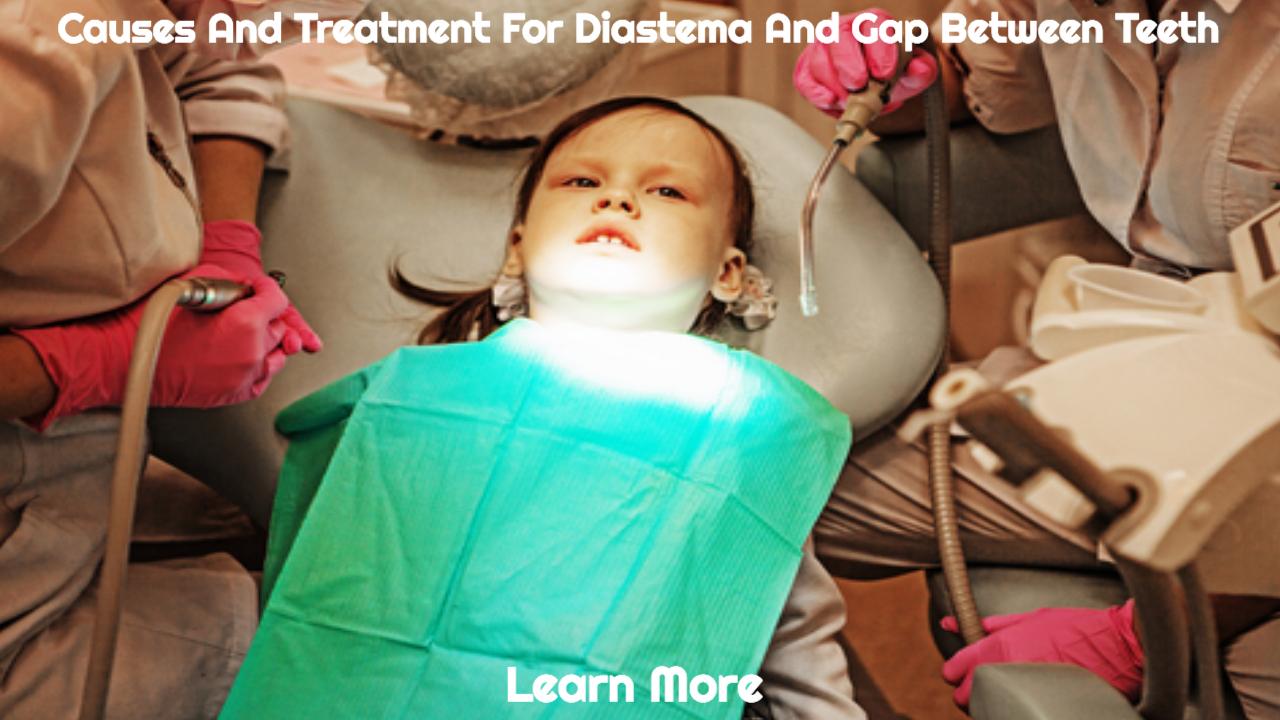Gap Between Teeth – The Causes And Treatments For Diastema
Gaps in your teeth, despite their ubiquity, might be an issue. You may dislike their appearance or the sensation of food becoming trapped between your teeth and gums. The good news is that this chasm does not have to continue indefinitely.
What is Diastema?
The space or gap between teeth is referred to as a diastema. These types of gaps can occur anywhere in the mouth, although they are most obvious between the front front teeth. This illness affects both adults and children. Children may have gaps that close when their permanent teeth fully mature.
Types of Diastema / Teeth Gaps
Diastema can be caused by a variety of reasons. The size and shape of the jawbone and teeth may be related to this disorder. Gaps can form when a person’s jaw bone is too tiny. Too many teeth might cause gaps. Because genetics can influence the size of your teeth and jawbone, diastema can be inherited.
A diastema could be caused by one of the following:
If a person’s jawbone is too tiny in comparison to their teeth, gaps between teeth might emerge. This is a common problem with the top lateral incisors. This refers to the teeth on either side of the front teeth. A space can form between the front teeth if the upper lateral incisors are absent or tiny.
The labial frenum is a tissue portion inside the top lip that runs to the gum area above the top front teeth. If the tissue is large enough, it might cause a space between the teeth.
Lip and thumb sucking, as well as other comparable habits, force the front teeth forward. Diastemas can be caused by pressure.
When children lose their baby or primary teeth, they may develop temporary diastemas. When their adult or permanent teeth emerge, these gaps fill.
Diaastemas can also be caused by gum disease. The inflammation can harm the gums and tissues that support the teeth, eventually leading to tooth loss and gapping between teeth. Tooth migration might be a sign of severe gum disease.
When missing teeth induce diastema, substantial dental intervention is required, such as dental implants or a bridge.
Placement of the tongue. Although a space between your front upper teeth is more prevalent, it can also form between your front lower teeth. A diastema in the front lower teeth is caused mostly by tongue push, which occurs when the tongue moves too far forward into the mouth.
How to Close a Gap in Your Front Teeth
Even if you do not see any visible gaps in your teeth, it is critical to have the diastema evaluated by a dentist. A dental checkup can help determine whether gum disease or another significant problem is to blame. A poor bite can also result in tooth gaps.
When Should You See a Dentist?
If you are concerned about your child’s diastema, you should see a dentist. All youngsters under the age of seven should be evaluated by an orthodontist. An orthodontist or dentist can diagnose the underlying source of the condition and, if necessary, propose therapy.
A diastema treatment may be unnecessary, especially if there is a size mismatch between the jawbone and the teeth or primary tooth loss. A dentist, on the other hand, can advise you on the best technique to close your gap if it is not medically necessary. These are some of the options for filling such gaps.
Treatment Options for Closing Teeth Gaps
Restorative treatment, such as porcelain veneers, composite bonding, or crowns, might be used by a dentist to close a gap between your teeth. Dental implants and bridgework can fill bigger gaps left by losing teeth.
Modern orthodontics is used by many dental practitioners to treat bite abnormalities and reposition crooked or overcrowded teeth.
Braces are a popular diastema therapy. They apply pressure to the teeth, gradually bringing them together.
Invisalign aligners are ideal for closing gaps and correcting misaligned teeth. While veneers and bonding can close tiny gaps, Invisalign is the greatest solution for closing larger gaps. Invisalign, a transparent aligner, straightens your teeth without you even realizing it. It is more expensive than traditional braces, although it is still less expensive.
For tiny gaps, tooth bonding is a good alternative. A tooth-colored resin is put to the tooth before being solidified with a specific light. Dental bonding can discolor, but not as much as crowns.
A porcelain veneer is a thin shell that bonds to the front of your tooth. After removing a small portion of enamel, the dentist will install the dental veneer.
Dentures are frequently chosen by those who have lost multiple teeth or whose dental health is at jeopardy. If you have little gaps, these dentures can be detachable implants.
Implants can be fixed or detachable, and they are color-matched to your natural teeth. Implants are recommended by dentists for those who have a large gap between their teeth. Implants are used to replace natural teeth. This treatment can only be performed by trained professionals.
A frenectomy is a surgical treatment that removes extra tissue from the mouth in order to alleviate diastema caused by an overly big labial frenum. Adults and older children may require braces to close the gap. However, in younger children, the space may spontaneously close.
Diastema Avoidance
Nobody can stop every diastema. However, there are numerous techniques to reduce the likelihood of forming a gap. You can educate your youngsters proper swallowing skills and help them quit sucking their thumbs. Brushing and flossing on a regular basis are vital. Cleanings and examinations at the dentist are advised twice a year.
Brought To You By: Dr. Julio C. Rosado
The post Causes And Treatment For Diastema And Gap Between Teeth appeared first on https://arquiaca.org
The post Causes And Treatment For Diastema And Gap Between Teeth appeared first on https://wookicentral.com
The post Causes And Treatment For Diastema And Gap Between Teeth appeared first on https://gqcentral.co.uk








Comments are closed